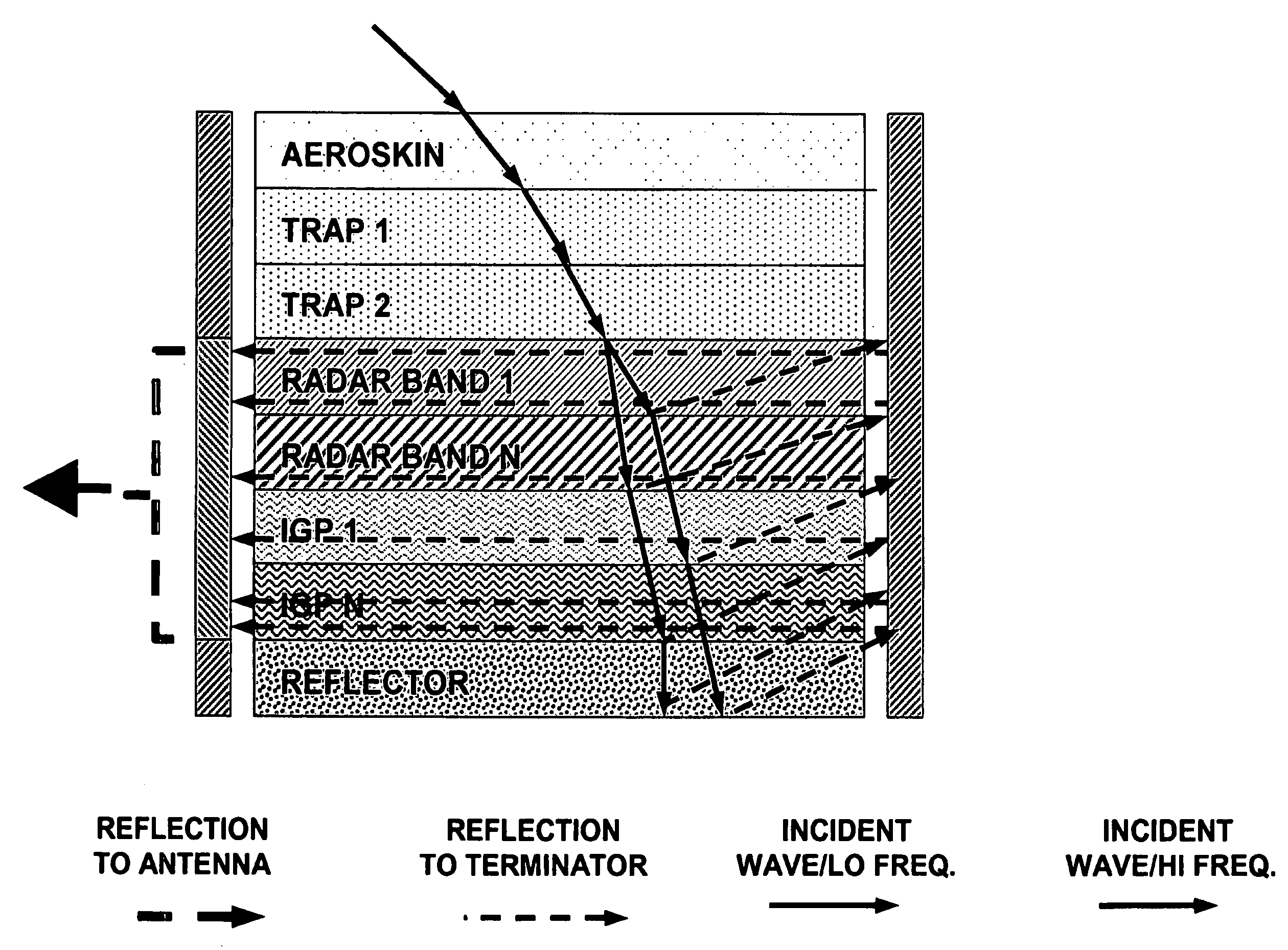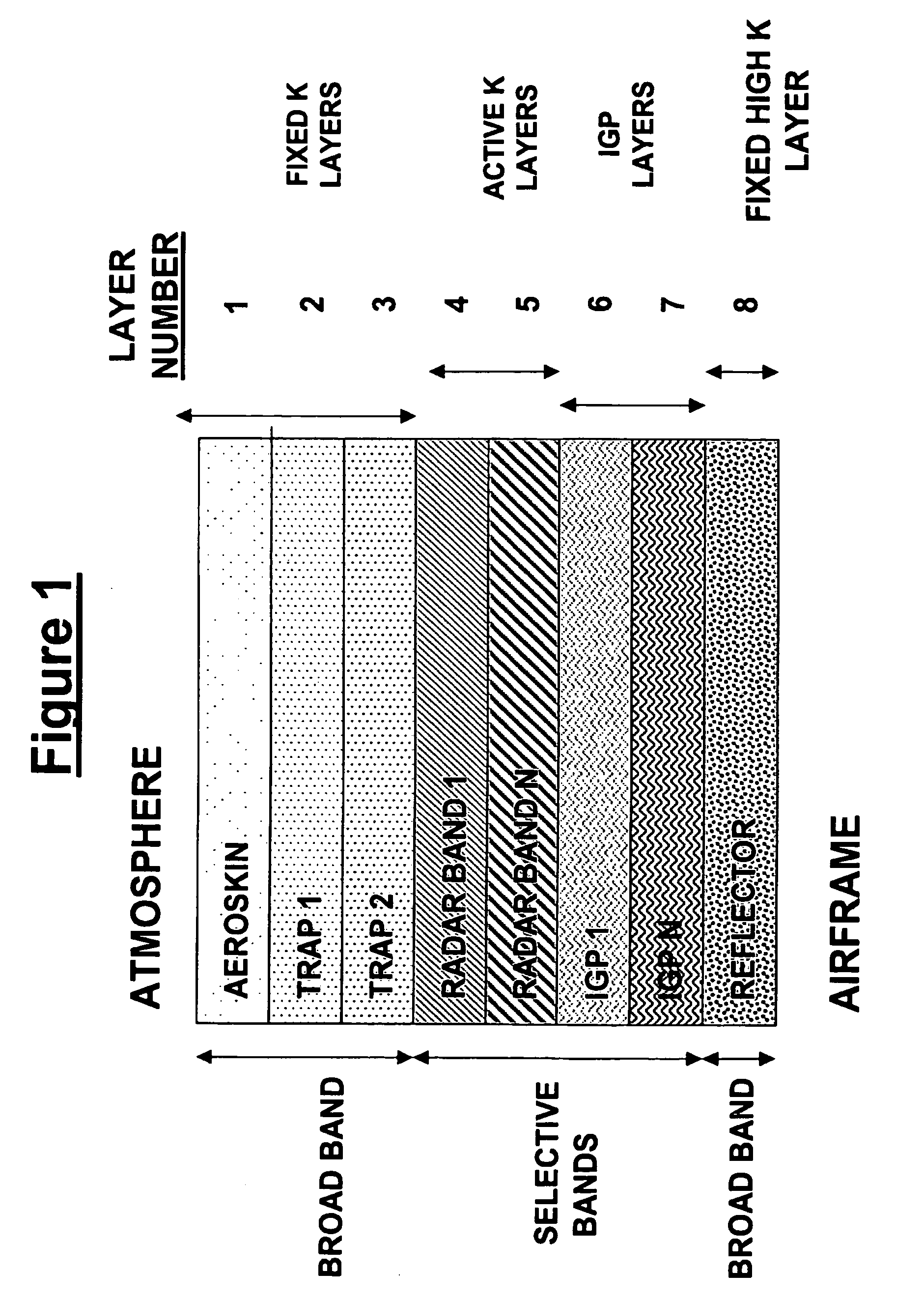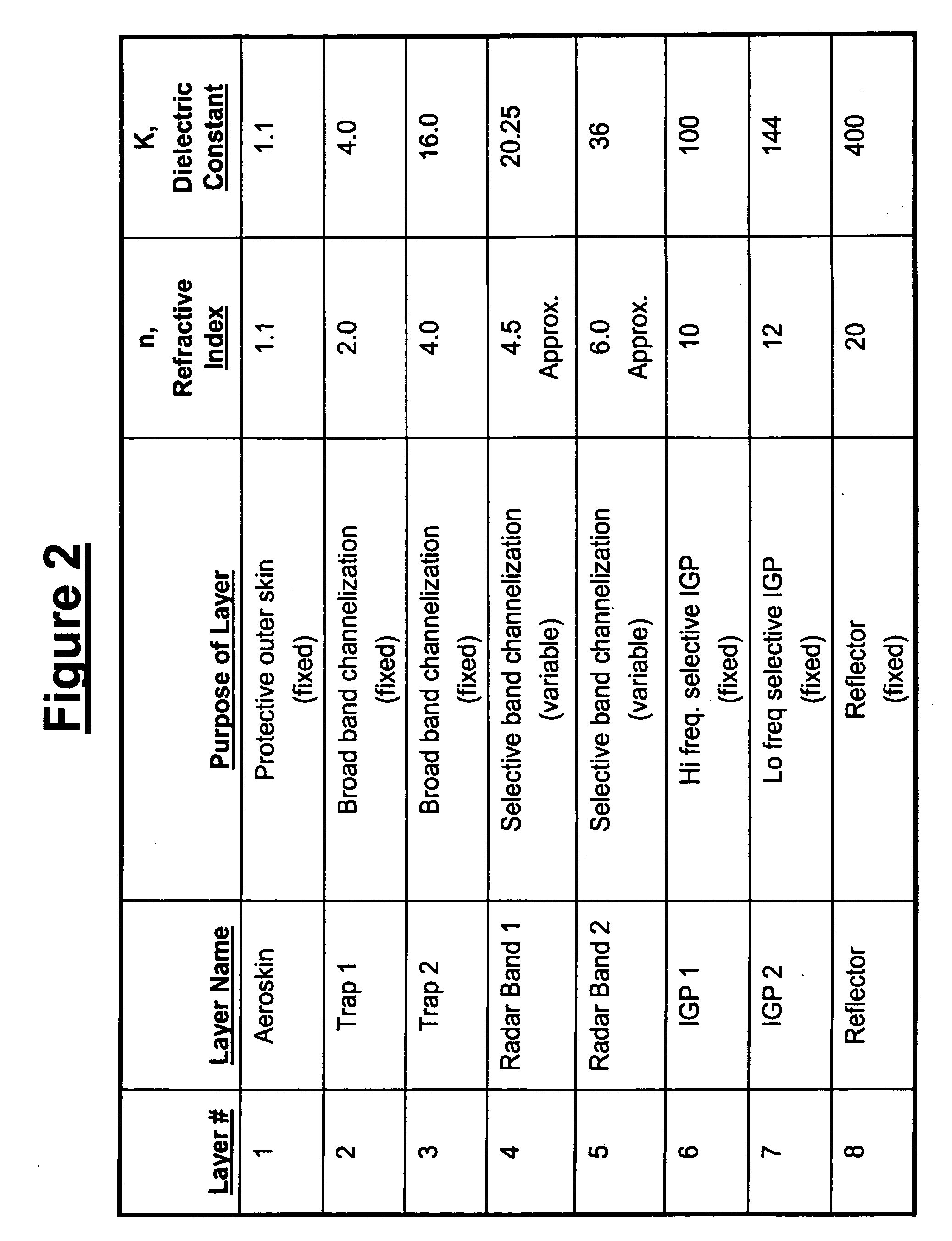Method of agile reduction of radar cross section using electromagnetic channelization
a radar cross section and electromagnetic channelization technology, applied in the direction of instruments, communication jamming, and antennas, can solve the problems of limiting the design possibilities of aircraft, failing to use existing stealth technologies, and not turning into useful technologies, etc., and achieve the effect of reducing the radar cross section
- Summary
- Abstract
- Description
- Claims
- Application Information
AI Technical Summary
Benefits of technology
Problems solved by technology
Method used
Image
Examples
Embodiment Construction
[0043]This invention, known as Method of Agile Reduction of Radar Cross Section Using Electromagnetic Channelization (MARRCS), relates to technology for providing an active method of reducing Radar Cross Section (RCS) of aircraft or other vehicle being scanned by threat detection radars. This technology will be both portable and scalable to accommodate a variety of aircraft, or other vehicles, not equipped with existing “Stealth” technology. It may also to provide dynamic and agile stealth capabilities to aircraft currently deployed with only the existing static Stealth technology. It is intended to use nanotechnology, where appropriate, reduce weight, provide support and insure airframe conformity. This technology will not adversely affect the aerodynamic characteristics of the aircraft.
[0044]Furthermore, the technology will be active in that it will provide optimum protection from radars operating at different or varying frequencies. The net result will be an agile radar “sponge” ...
PUM
 Login to View More
Login to View More Abstract
Description
Claims
Application Information
 Login to View More
Login to View More - R&D
- Intellectual Property
- Life Sciences
- Materials
- Tech Scout
- Unparalleled Data Quality
- Higher Quality Content
- 60% Fewer Hallucinations
Browse by: Latest US Patents, China's latest patents, Technical Efficacy Thesaurus, Application Domain, Technology Topic, Popular Technical Reports.
© 2025 PatSnap. All rights reserved.Legal|Privacy policy|Modern Slavery Act Transparency Statement|Sitemap|About US| Contact US: help@patsnap.com



